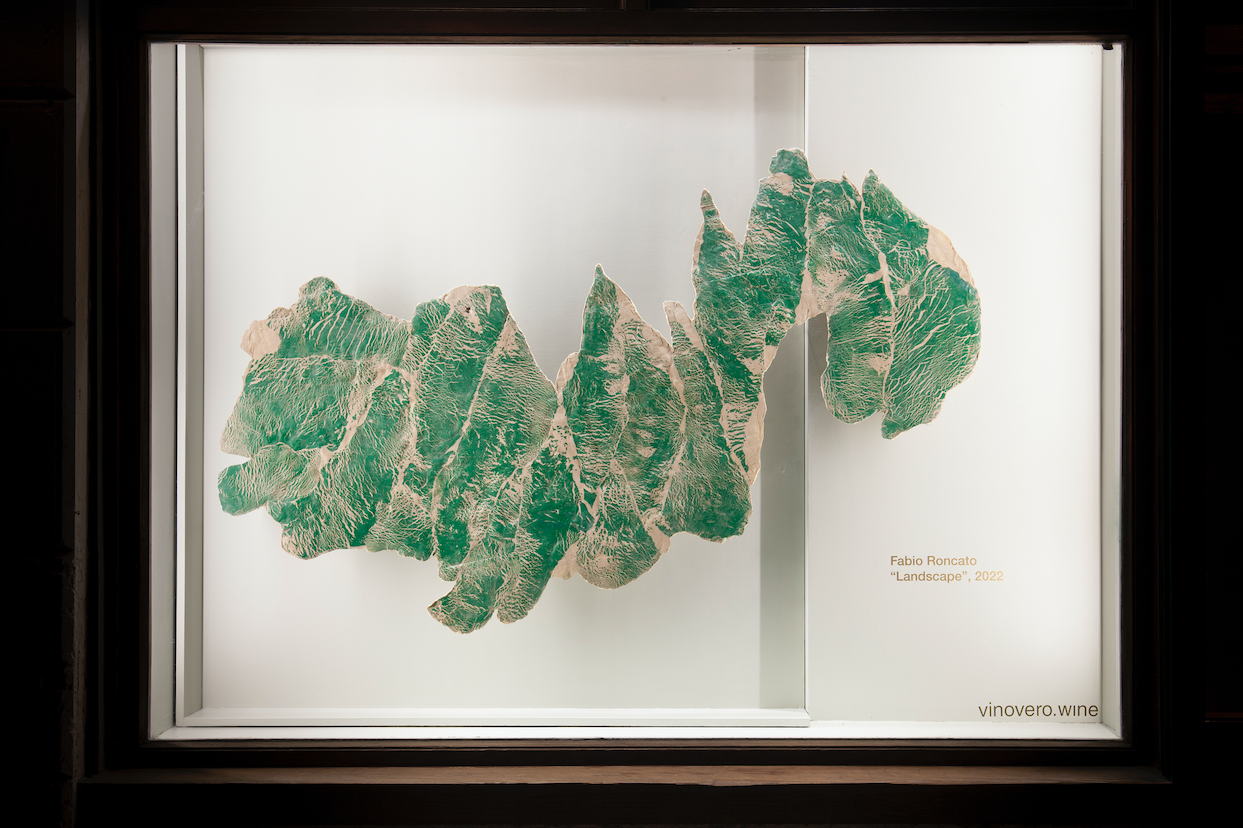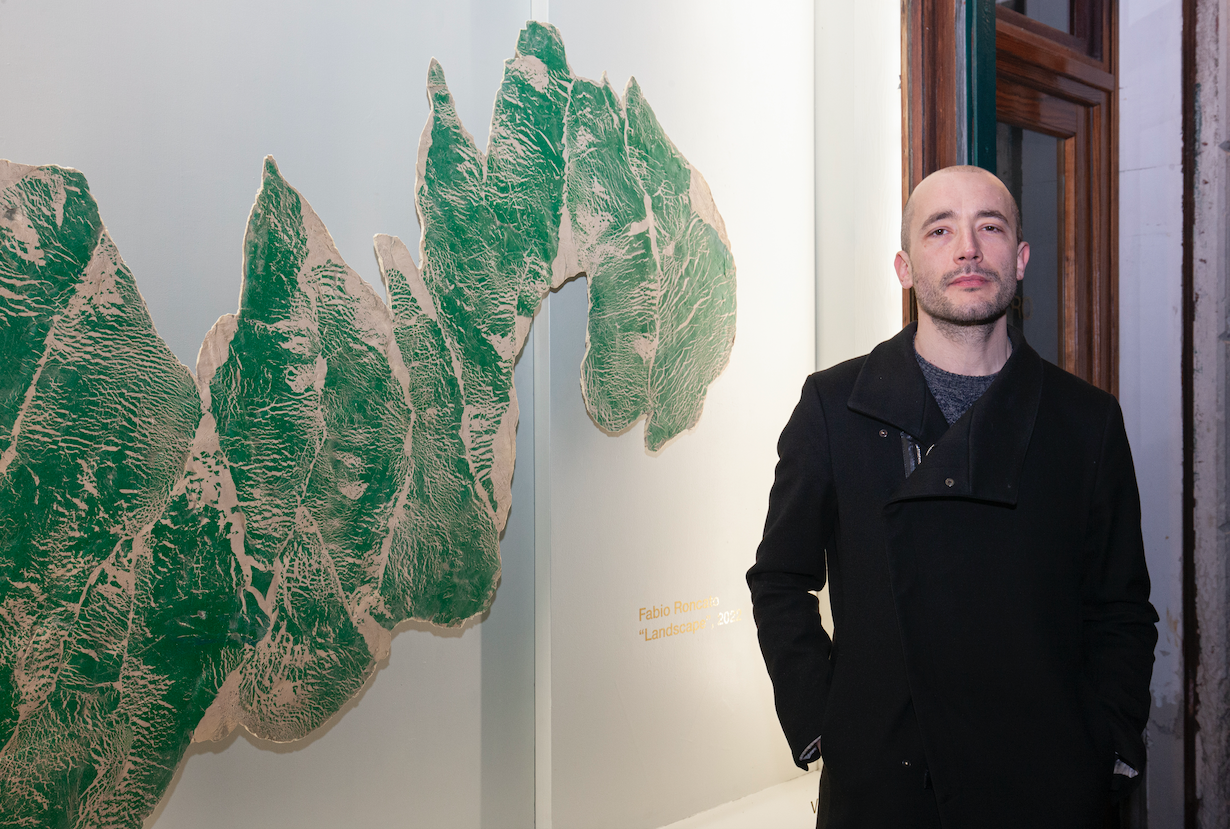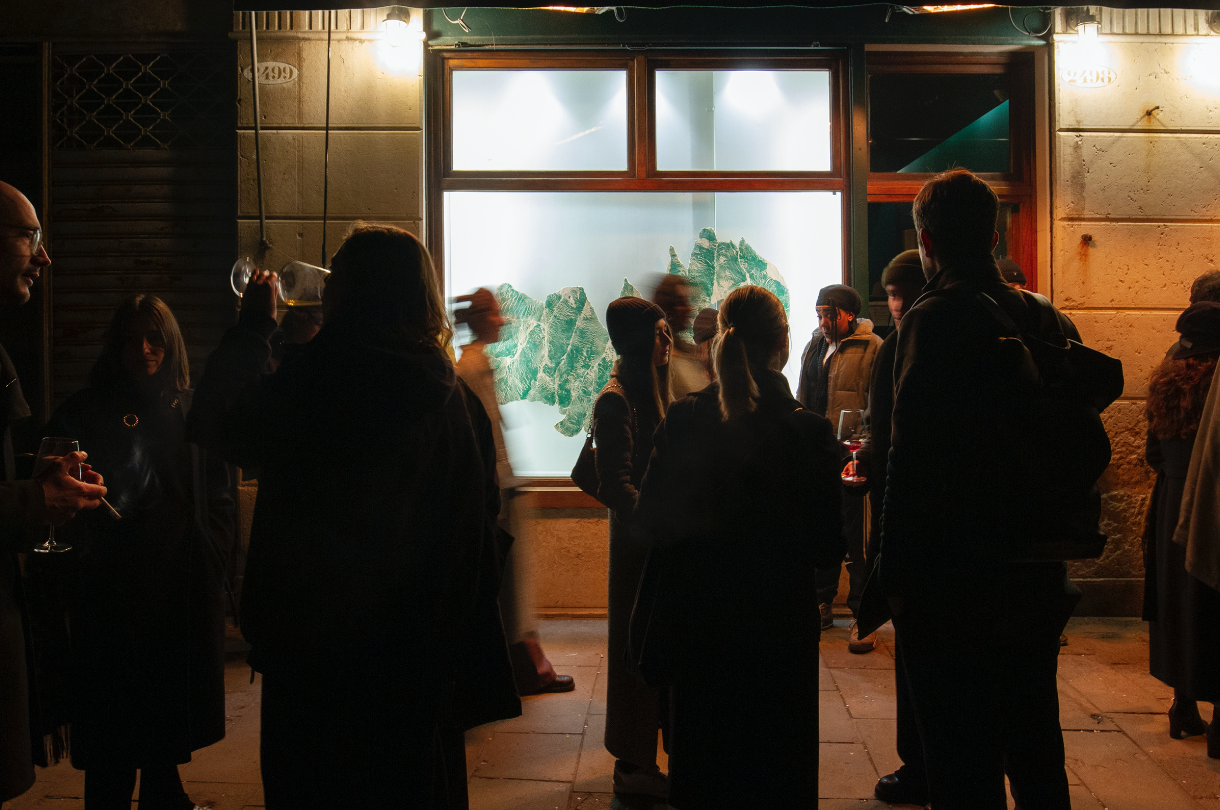Fabio Roncato, Landscape at Vino Vero Venice
Vetrina presents a series of exhibitions curated by Mara Sartore for Vino Vero and in collaboration with Lightbox: on a quarterly basis, internationally renowned artists working on the theme of nature are invited to present their site-specific works in the window of the wine club adjacent to the wine bar.
The seventh edition of “Vetrina”, Vino Vero presents a site-specific work by Fabio Roncato, whose work seeks to reformulate the relationship between artistic practice and the understanding of what surrounds us.
Fabio Roncato (Rimini, 1982), lives and works between Milan and The Hague. After graduating from the Brera Academy of Fine Arts in Milan, he has completed his studies through scholarships and artistic residencies including: the Atelier Bevilacqua La Masa (Venice), VIR-Via Farini in Residence (Milan), Fondazione Spinola Banna per l’Arte (Banna, Turin), Jan van Eyck Academie (Maastricht) and Shanghai Prize at the East China Normal University (Shanghai), Italian Institute of Culture in Paris. His works have been shown in solo and group exhibitions in private galleries, independent spaces and museums in Italy and abroad, including: Momentum (Adda), Platea – Palazzo Galeano, Lodi (2022), Fulgura et Fossilia, Museo civico di Scienze Naturali di Brescia (2022), I won’t look back anymore, Sečovlje Salina Nature Park, Slovenia (2021), Italian Twist, Fondazione Imago Mundi, Gallerie delle Prigioni, Treviso (2021), Come pesci nell’acqua, Villa Nigra, Miasino (2021), Come trattenere l’energia che ci attraversa. Paesaggi, Fondazione Bevilacqua La Masa, Palazzetto Tito, Venezia (2021), The Field of Unknown, Ingrid Deuss Gallery, Anversa (2020), Il motore delle stelle, The open box, Milano (2019), Il pianeta dove evaporano le rocce, Torre delle Grazie, Musei Civici di Bassano del Grappa, Bassano del Grappa (2018).
For Vetrina#07, Fabio Roncato presents “Landscape”, a work that, through an experimental printing technique based entirely on the movements of the earth, arises precisely from the reaction of contact between matter. In the creation of “Landscape”, a mass of mud is entirely painted with enamel and then placed on a plane covered with polyurethane resin; the “movements of the earth” as they are placed on the plane are thus recorded by the breaking of the colour, which, like the earth’s surface, moves and brings out tensions, trajectories and landscapes. Finally, when all the materials are stable and still, the work is washed with water so as to entirely remove the muddy material that, as it subtracts a little at a time, allows the remaining surface to record and narrate it’s simple and changing nature. Similarly to a satellite image – where rivers, seas, landmasses and continents emerge.




